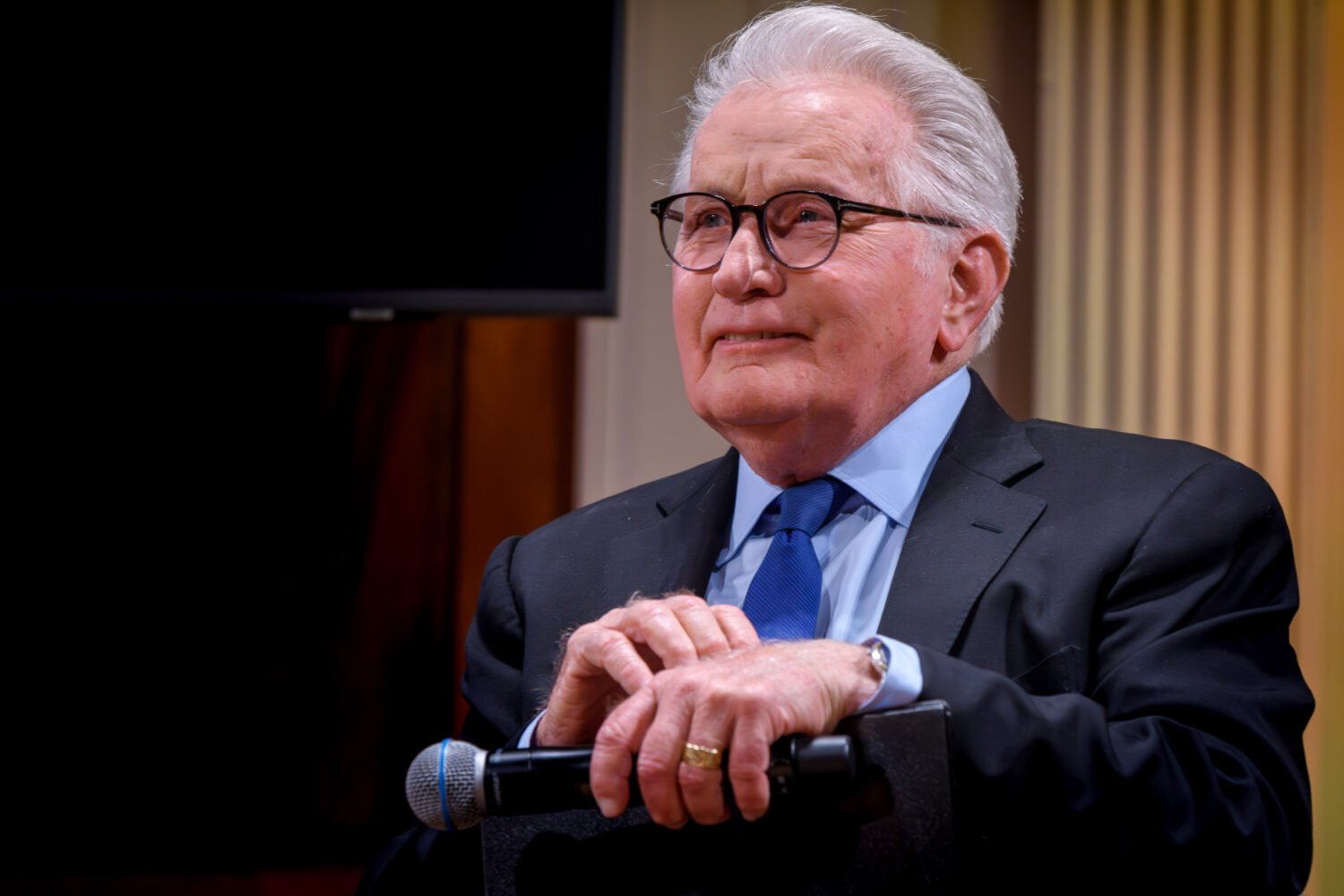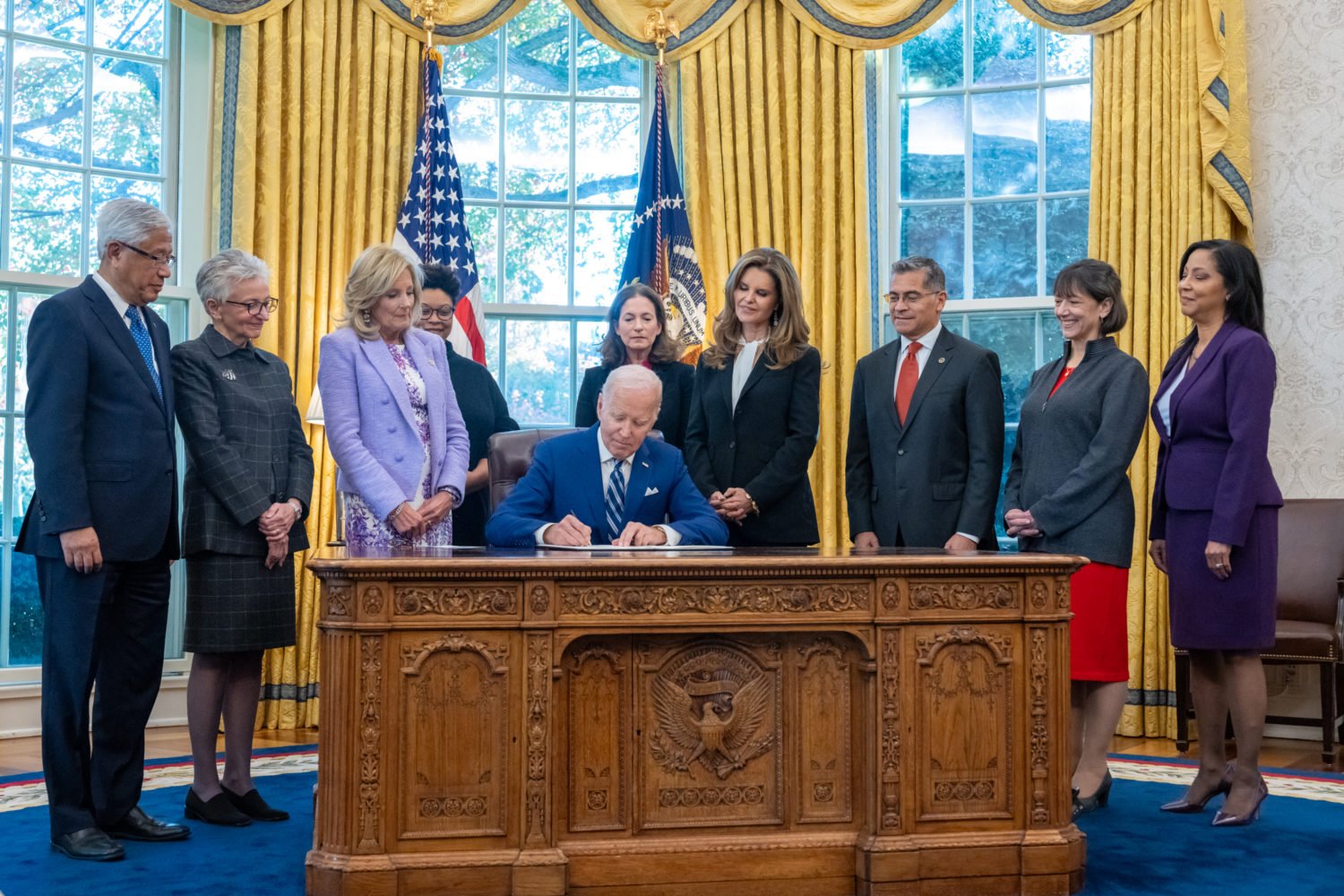
Whatever your feelings about former President Bill Clinton—reverence, doubt, curiosity, rage—your point of view will likely be satisfied by the four-hour documentary, Clinton, that will air over two nights on PBS stations beginning Monday, February 20. For a Washington audience, it plays more like a home movie, with all-too-familiar characters resurfacing.
The documentary is produced by Barak Goodman and Chris Durrance as part of the PBS series “American Experience,” which is creating a collection of presidential biographies. Clinton is a juicy subject, and that’s part of the beauty of this film; it’s a history lesson and a captivating cautionary tale all in one. The biography is split into two parts. The first two hours, “The Comeback Kid,” revisit his unstoppable imperative as the first baby boomer president. The second two are called “The Survivor.” The opening scenes are focused on what you might expect: Monica Lewinsky, the White House intern who became a household name for having oral sex with Clinton in the Oval Office—prompting endless jokes and the second impeachment vote in US history.
For those who remember the arc of the Clinton years, many familiar faces appear onscreen to testify about the man—though not the man himself. There are close friends and advisers: David Gergen, Wesley Clark, Mike McCurry, Dick Morris, Sidney Blumenthal, Harold Ickes, James Carville, Dee Dee Myers, Leon Panetta, Mark Penn, Joe Purvis, Robert Reich, Robert Rubin, John Podesta, Harry Thomason, and Betsy Wright. One wonders, though, where is good friend and first White House chief of staff Mack McLarty?
Meanwhile, a boatload of journalists have their say, including Christiane Amanpour, Jonathan Alter, Max Brantley, John Harris, David Maraniss, and Jeffrey Toobin.
The Republican opposition also makes its way into the film, including the late Tony Blankley, who was press secretary to then–House Speaker Newt Gingrich, and congressman Peter King of New York. The Lewinsky saga includes take-you-back moments with special prosecutor Ken Starr; Lucianne Goldberg, a Linda Tripp and Drudge intermediary still raging about Clinton; and James Fisher, who was a lawyer for Paula Jones. Alas, Jones herself doesn’t make an appearance, and neither does Lewinsky, apart from in news clips.
While this may sound like a lot of talking heads, these interviews are pointed and well edited, and don’t slow the pace.
After the opening Lewinsky sequence, the documentary travels back in time to “a town called Hope,” Clinton’s Arkansas hometown, where he began the political journey that led to his first successful election to the House of Representatives, his governorship in 1978, his 1992 defeat of President George H.W. Bush, and two terms in the White House.
So is this depiction of Clinton an honest one, displaying warts and all? Yes. It may not show every wart, but many of them make an appearance. Oddly enough, the bad days are recalled more often by his acolytes than his enemies.
A theme running through the film is Clinton’s need for love. It comes up again and again, beginning with what narrator Campbell Scott calls his “tumultuous home life as a boy and teenager.” It fuels his ability to be a marvelous campaigner and foster a warm connection with voters, but it is also the source of self-destructive behaviors such as marital infidelity. Marla Crider, who worked with him in Arkansas, likens his relationships with women to that of a “fly and honey; he needed that kind of adoration.” She says Lewinsky “gave him something that he needed at that time: to be adored.”
David Gergen, who has worked for both Republican and Democratic administrations, says of the beginning of the Clinton era, “Those who believed in Bill Clinton, as I did, thought, ‘This is going to be really, really good for the country.’” But the Clinton team arrived at the White House and made a lot of missteps.
The blunders are part of history now: the mishandled Supreme Court nomination of Zoë Baird, gays in the military, a budget dispute, and a fitful attempt at health-care reform. As are the heartbreaks: the suicide of friend and legal counsel Vince Foster, the Somalia debacle, and Rwanda. The Whitewater scandal emerges in the first half of the documentary, described as “the scandal that would haunt Clinton’s presidency longer than any other.”
By Clinton’s first midterm elections he was a president on the ropes, which gave then-congressman Newt Gingrich the chance to take center stage as Speaker of the House as both chambers went Republican. Mark Penn says that after that setback, Clinton “made an effort to change his administration.” The change included adding political consultant Dick Morris to the team. “We embarked on a conscious strategy of making the American people think of Clinton as strong,” says Morris. “For Bill to be strong, Hillary had to be weak.”
The First Lady, who was given a key position on the failed health-care effort, didn’t want to take a backseat, but her husband’s new political guru gave her no choice. “I told her, ‘You can be as influential as you want to be, but do it in private,’” says Morris.
Panetta remembers Clinton negotiating with Gingrich over the government shutdown of 1995 to regain his foothold. “Clinton looked at him and said, ‘You know, Newt, I can’t do what you want me to do. It’s not right for the country. It may cost me the election, but I can’t do it.’ From that moment, it became a renewal of Bill Clinton.”
The second part of the biography does not focus solely on what became known as Lewinskygate, but the episode is retold in detail and is the distraction from everything, even a booming economy.
Robert Reich, who was Clinton’s labor secretary and long-time friend, says, “I’ve asked myself many times why he put his presidency in jeopardy.”
Journalist Michael Isikoff, who broke the Lewinsky story, compares Clinton to Richard Nixon in that both blamed their political enemies for their troubles. But he also notes a major difference: “Nixon always suspected that his political enemies were better than him. Clinton hated his political enemies and was convinced they were beneath him, which is why he would never give in to them and resign,” he says.
The documentary stops short of detailing Clinton’s last messy hours in the White House—the controversial pardons, the debate over what the Clintons left with that was theirs and what belonged to the White House—but it does point out that he practically needed to be dragged from the Oval Office.
It also notes that at the same time as Clinton’s fate was sealed on Capitol Hill, Hillary Clinton was upstairs at the White House, meeting with advisers to map her campaign for the US Senate seat for New York. The film notes, “The end of Clinton’s crisis is the beginning of Hillary’s new phase.”
At the end of the four-hour movie, as with the end of the eight years of the Clinton administration, you’ll be exhausted and wondering, What now? What does a political leader who is that complicated and complex do for a second act? As we know, Clinton has never fully left the stage, with his involvement in Hillary’s presidential campaign, a lucrative public speaking career, various presidential missions, and his Clinton Global Initiative. Even open-heart surgery barely slowed him down. At one point in the film, Politico editor John Harris alludes the idea of the wolves being at Clinton’s heels. Maybe that’s the key to him—that as much as he’s looking for love, he’s also running from something, though no film may ever be able to tell us exactly what.


















